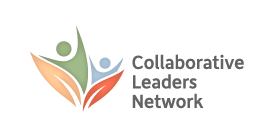Convener establishes baseline understandings with participants.
- Refine roles and expectations of conveners, facilitation team, and participants.
- Clarify practicalities such as expense reimbursement and travel logistics.
Group reviews survey feedback.
- Acquaint participants with range of views within the group in a way that equalizes their volume.
- Review proposed process design to identify areas for possible adjustments based on additional participant feedback.
Group formalizes project trajectory.
- Reaffirm and codify overall goals and end product.
- Adopt or affirm in principle the elements of a charter, including:
— discussion ground rules
— attendance expectations
— agenda template
— caucus topic areas
— assignment of task force members
— decision making methods
— external communication
— between-sessions communication
— meeting notes
- Reach agreement about the general structure of business meetings and community meetings that will be convened.
- Collectively approve meeting and travel schedule/logistics.
- Generate a list of resource persons to invite to address the group at future meetings.
Community customs may vary.
It is often the custom of local groups in Hawai‘i to begin and end meetings with a pule, or short prayer, which could be considered at odds with the “separation of church and state” thinking. If there seem to be no reservations or signs of discomfort, this practice can continue throughout the group’s work. If there are mixed feelings, they should be talked about and resolved in a way that everyone can live with.
Group members want to advocate at legislature.
Participants may want to provide written or verbal testimony to the legislature on bills and resolutions related to the working group’s areas of interest. It’s important to clarify protocol for how feedback gets to legislative stakeholders, what the internal review process is for the working group, and what to do if participant positions are at odds with the official position of the convener agency. Developing guidelines in advance will save time, avoid misunderstandings, and enable the group to share its emerging thinking with legislators in a manner supported by the convener and the group.
Participants have different preferences.
Some participants may have stronger interests in site visits, detailed conversations with individual practitioners, and hands-on experiences, whereas others may want to spend time codifying practices and producing a document. The facilitator needs to develop a path between the two, offering enough of both kinds of opportunities to get participants to stay engaged.
Unresolved issues show up behaviorally.
Community concerns regarding unresolved issues with agencies are sometimes projected onto institutional representatives in the group who have little or nothing to do with these issues. It’s important to identify and name what’s going on, and make the decision of whether to address the dynamic in the context of the working group, handle it outside the group, or agree to disagree and move on.
These types of questions come up in the course of working group discussions:
- In light of survey responses, how do we maximize the return on our community site visits and community meetings?
- What do we need to learn from our constituents? What is the best way to gather this input?
- How do we handle communication within and outside the group?
- How do we keep our efforts from getting derailed by people passionate about subject matter that is outside of the group’s scope or focus?
- How do we manage difficult behaviors at meetings (angry community members or litigants)?
- What community, constituent, agency, policy, or subject matter people can we get to the table to help us better understand perspectives and positions?
- How should we handle public access to working group members and information via the website?
Clarify terms so that everyone is using them the same way.
The facilitator should remain attuned to the use of terms that parties apply to their work. Concepts like “transparency,” “timeliness,” and “confidentiality” mean different things to different people. For example, does transparency mean posting agendas and minutes where they can be reviewed by non participants? Does timeliness mean making information available for external review within a certain number of hours after a meeting? How does confidentiality play into a group’s records (which need to be detailed enough to help people pick up the thread of the discussion, but not so specific as to compromise someone’s privacy or proprietary information)? The point is to clarify all terms that are being used by the working group.
